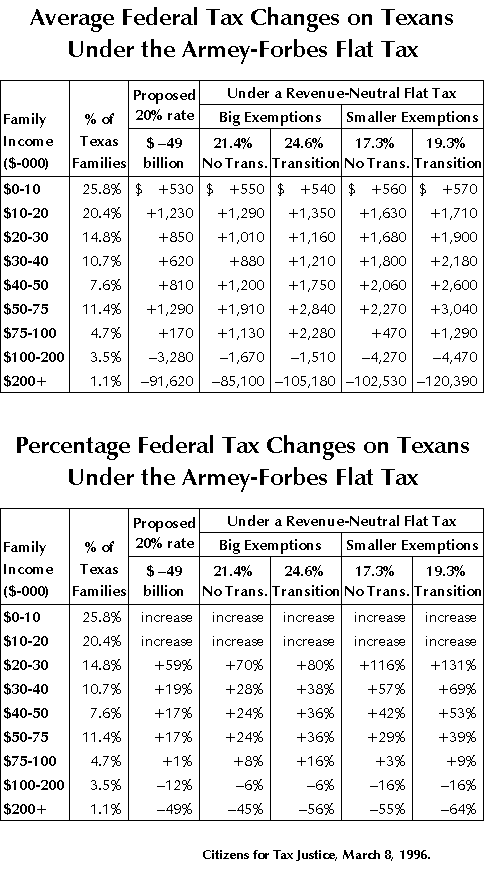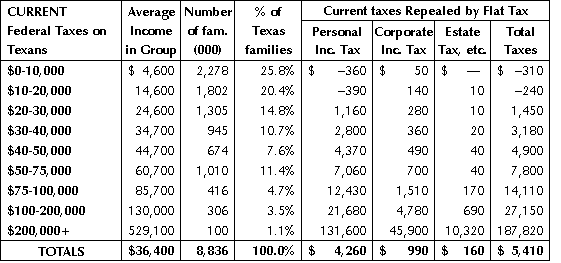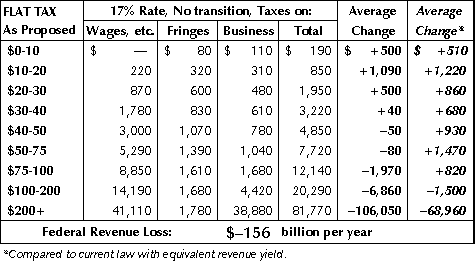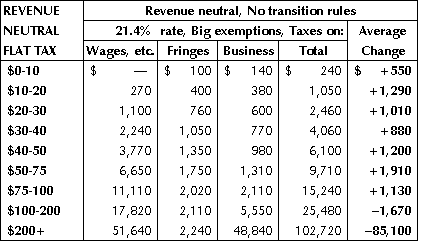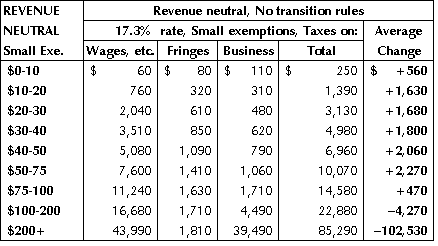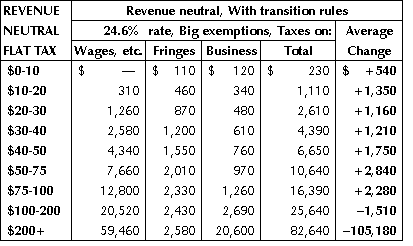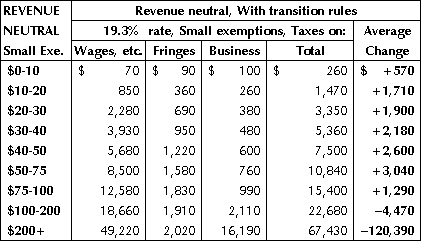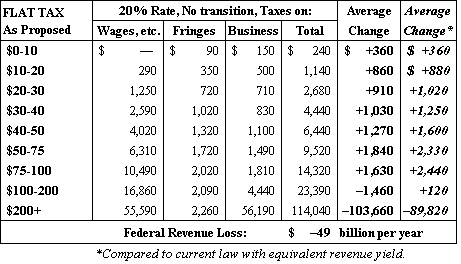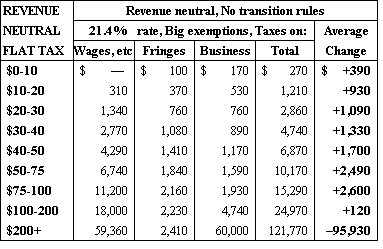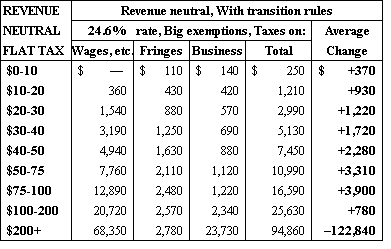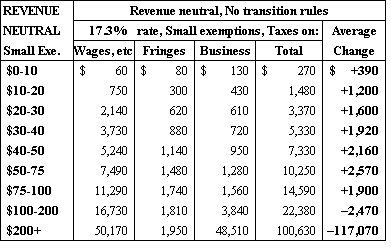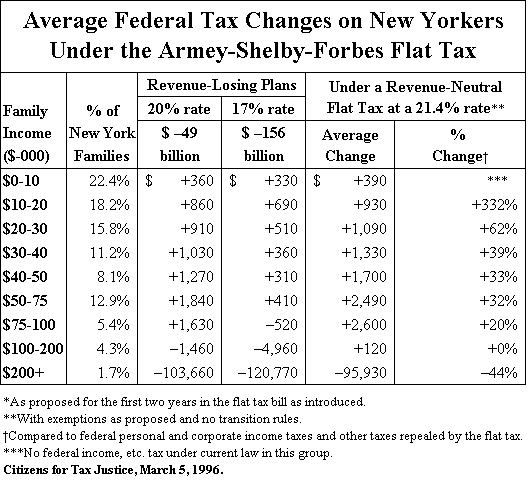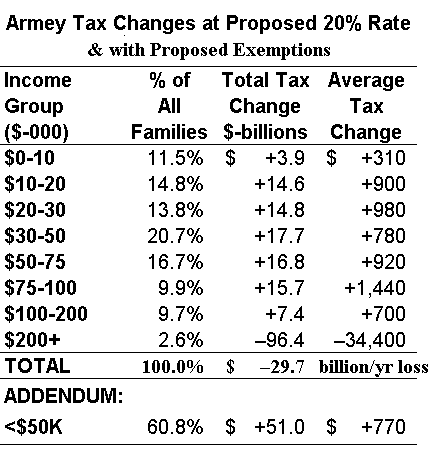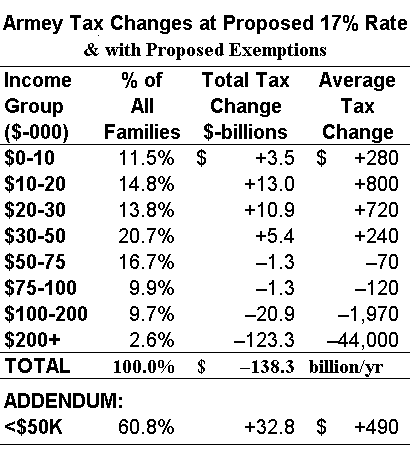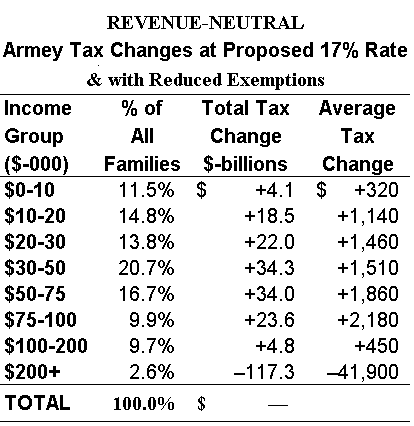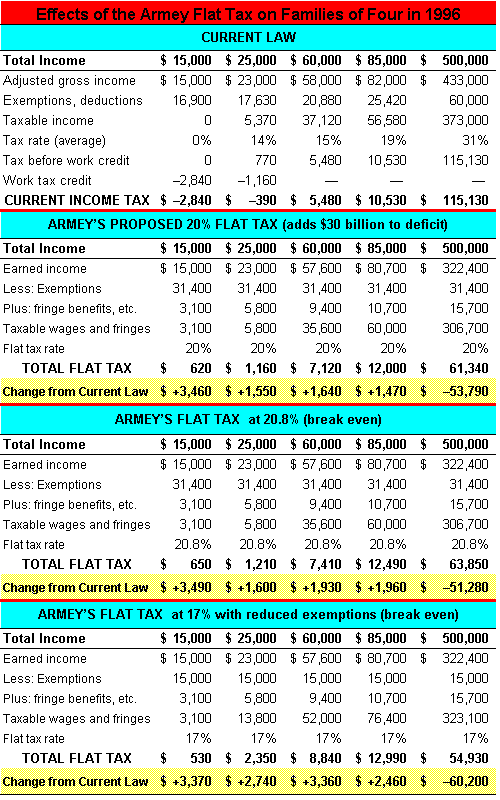May 12, 1996 02:35 PM | Permalink | ![]()
Kemp, The Flat Tax and Employer Provided Health Care
Former housing secretary Jack Kemp agreed that the flat tax [which taxes fringe benefits] might lead to a decrease in employer-funded health care. “But people would be able to purchase their own health insurance,” he told “Face the Nation.” “What we’ve got to get rid of is third-party payments—government, business or union.”
— The Washington Post Jan. 22, 1996, A6
Conservative Economists Tell All
A group of conservative Republican economists has charged that House Majority Leader Dick Armey’s [flat tax] would result in “significantly higher taxes” for the middle class.
Echoing Democratic complaints about the scheme, the economic consulting firm of Lehrman, Bell, Mueller and Cannon argues that by eliminating many popular deductions, the plan will end up increasing federal taxes for most workers.
In a letter to key Republicans, they pose the semi-rhetorical question, “Does the Republican Party want to take into 1996 a flat tax proposal that raises taxes on most American workers and worsens the middle-class squeeze?”
The team’s party credentials are solid. Lehrman ran for governor of New York and Bell ran for Senator from New Jersey, both as Republicans.
–The American Legion magazine, December 1995, p. 14
Dick Armey, the Flat Tax’s Current Champion In Congress
Majority Leader Dick Armey seeks to undo virtually every governmental accomplishment for working people, Democrat and Republican, of the past 60 years.
Armey is a shiny-eyed ideologue who wants freer immigration plus an end to minimum-wage laws, abolition of the earned-income tax credit for the working poor, no taxes on dividends or capital gains, abolition of environmental regulations and an end to both the current Medicare system and employer-paid health insurance.
Armey is another of these latter-day Ronald Reagans who have neither Reagan’s charm nor Reagan’s intellect.
Lars-Erik Nelson
— NEW YORK NEWSDAY, July 9, 1995
Golden Oldy Tax Quotes
A Philosophy
“‘Tis true that governments cannot be supported without great charge, and it is fit everyone who enjoys a share of protection should pay out of his estate his proportion of the maintenance of it.”
John Locke
Perfection Sought
“Whoever hopes a faultless tax to see, hopes what ne’er was, is not, and ne’er shall be.”
Alexander Pope
The Original United States Chamber of Commerce
“Why shouldn’t the American people take half my money from me? I took all of it from them.”
Edward Albert Filene (1869-1937)
Filene (of Boston’s Filene’s Department Stores) founded the U.S. Chamber of Commerce to encourage businesses to contribute to the welfare of their communities. He eventually quit the organization, disappointed that it had become a bastion of right-wing conservatism and an anti-tax lobby.
Mr. Dickens on Taxes and Herbs
“It was as true . . . as turnips is. It was as true . . . as taxes is. And nothing’s truer than them.”
Charles Dickens — DAVID COPPERFIELD (1849-1850), CH. 21
The Father of Modern Capitalist Thought on Progressive Taxation
“The subjects of every state ought to contribute toward the support of the government, as nearly as possible, in proportion to their respective abilities; that is, in proportion to the revenue which they respectively enjoy under the protection of the state ….[As Henry Home (Lord Kames) has written, a goal of taxation should be to] ‘remedy inequality of riches as much as possible, by relieving the poor and burdening the rich.'”
Adam Smith
— AN INQUIRY INTO THE NATURE AND CAUSES OF THE WEALTH OF NATIONS (1776)
An American View
“Idleness and pride tax with a heavier hand than kings and parliaments. If we can get rid of the former, we may easily bear the latter.”
Benjamin Franklin
— LETTER ON THE STAMP ACT (July 11, 1765)
A Word for the IRS
“The art of taxation consists in so plucking the goose as to get the most feathers with the least hissing.”
Jean Baptiste Colbert Controller General of Finances for Louis XIV
By Definition
“EXCISE — A hateful tax levied on commodities, and adjudged not by the common judges of property, but wretches hired by those to whom excise is paid.”
Samual Johnson
— DICTIONARY (1755)
National Sales Tax Quotes
Senator Lugar explains his proposed national sales tax
“I admit that if the point of taxation is progressivity or so-called fairness and redistribution, then my plan will not be your cup of tea.”
Senator Richard Lugar (R-Ind.)
— Tax Notes, July 31, 1995, p. 522.




